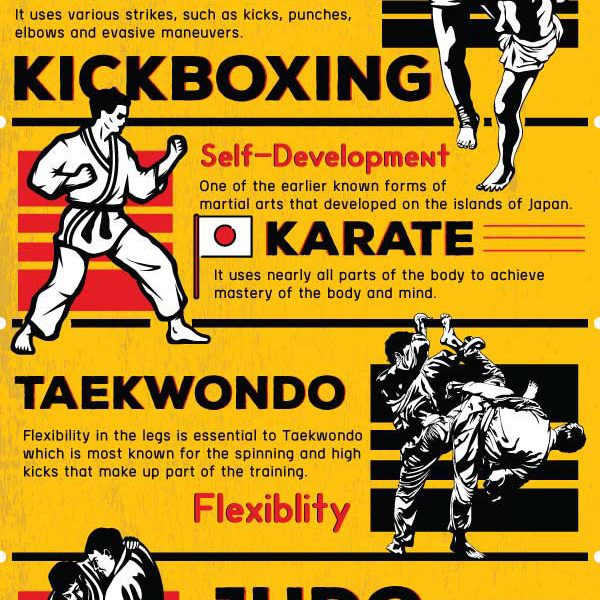Demystifying The Various Fighting Style Designs: From Karate To Taekwondo
Demystifying The Various Fighting Style Designs: From Karate To Taekwondo
Blog Article
Material By-Stender Weiner
Are you tired of sensation overwhelmed by the huge world of fighting styles? With so many styles to pick from, it can be very easy to obtain lost in a sea of strikes, kicks, and strange names. Yet anxiety not!
This conversation will certainly debunk the different fighting styles styles, taking you on a trip from the powerful strikes of Karate to the dynamic kicks of Taekwondo. Prepare yourself to reveal the beginnings, methods, and philosophies behind these ancient art types.
So, tighten your belt and prepare to start an enlightening exploration right into the exciting globe of fighting styles.
Beginnings of Martial Arts Styles
The origins of fighting styles styles can be traced back to old human beings and their requirement for self-defense and fight methods. Throughout background, different cultures created their very own special methods of fighting, each with its very own collection of methods and ideologies.
In China, for instance, fighting styles designs such as Kung Fu and Tai Chi were established as a means of self-defense and improving physical and mental well-being.
In Japan, the samurai warriors produced styles like Martial arts and Judo, focusing on technique, accuracy, and mastery of the body.
Likewise, in Korea, Taekwondo became a martial art emphasizing high kicks, rapid movements, and mental stamina.
These early worlds laid the foundation for the varied range of martial arts designs that exist today, each with its own rich history and social value.
Methods and Training Approaches
To understand martial arts styles, professionals should learn numerous strategies and training methods.
Strategies are the specific motions and activities used in fight, such as strikes, kicks, throws, and obstructs. click now have their own distinct collection of methods that practitioners should understand with rigorous training.
Training approaches differ depending on the design, yet they typically involve a combination of physical conditioning, drills, sparring, and forms.
Physical conditioning is essential to build strength, adaptability, and endurance. Drills assist specialists improve their methods and enhance their rate and precision.
Competing allows professionals to exercise their strategies in a regulated, realistic setting. Types, also called kata, are ironclad sequences of movements that aid professionals establish muscle memory and emphasis.
Philosophies and Concepts
Exploring the approaches and principles of martial arts styles can offer you with a much deeper understanding of your chosen self-control. Each fighting style has its very own unique approach and set of guiding concepts that shape the way it's exercised.
For https://www.thesheridanpress.com/news/regional-news/jiu-jitsu-students-build-self-confidence-through-self-defense/article_29ab802e-37a5-11ee-9e03-1b4912a49f38.html , Martial arts emphasizes technique, respect, and self-control. It shows practitioners to concentrate their minds and bodies, enabling them to safeguard themselves while preserving a feeling of internal peace.
On the other hand, Taekwondo puts a strong emphasis on rate, agility, and flexibility. Its concepts are rooted in the tenets of courtesy, honesty, determination, self-discipline, and unbeatable spirit.
Conclusion
Since you've explored the origins, methods, and viewpoints of numerous fighting styles styles, you have a much deeper understanding of these ancient disciplines.
Picture a young karate trainee, experimenting steady determination and emphasis, breaking through boards with an effective strike.
Their trip showcases the devotion and stamina needed to master a fighting style, reminding us that with technique and perseverance, anything is feasible.
